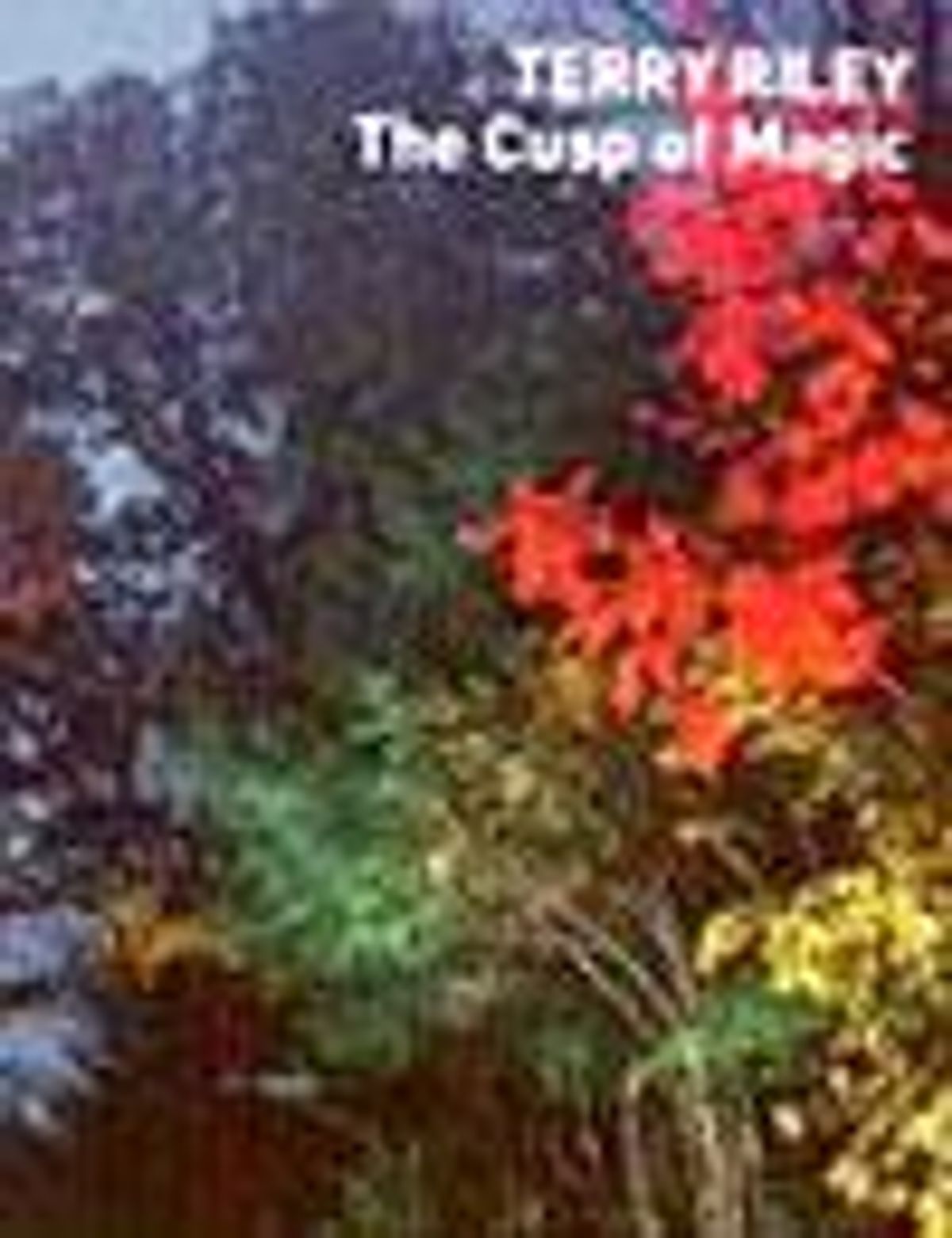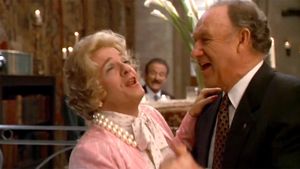Composer Terry
Riley is a bit of a living legend. As one of the foremost
leaders of the minimalist school, he's interacted and
associated with many of the major names of modern
classical and avant-garde music, including La
Monte Young and South Asian Kirana master Pandit Pran
Nath. At 72, his music is enjoying a renaissance among young
listeners. Reissues of some of his earlier works, such as
Poppy Nogood and Les Yeux Fermes
(both available on Elysian Fields) are now available on
CD, and his latest work The Cusp of Magic hit
record stores on February 5.
The Cusp of Magic was written for and recorded
by Riley's long-time collaborators the Kronos Quartet
(who also have a certain legendary status among the
cutting edge crowd) and the distinguished pipa
virtuoso Wu Man. The pipa, a lute-like Chinese
instrument, features prominently throughout, making
Cusp unique among Western works. The Cusp of
Magic, which astrologically is the week between
Gemini and Cancer, patterns itself after the Native American
peyote ritual in which each musician makes an
individual contribution to the ceremony.
The first two
movements constitute about half of the Cusp's length.
Like much of Riley's music, they rely on
patterns established by minimalism and Indian
influence. The first movement begins with an insistent and
constant percussive beat from drum and rattle that
remains throughout its ten minutes. The quartet soon
introduces itself with short, staccato chords (for
which minimalism is known), followed by the entry of the
pipa. Within a few measures, the pipa comes more
into the foreground, creating an almost
improvisatory experience. Toward the end of the
movement, the music grows more fluid, allowing for greater
virtuosity from the players, and culminating in a very
brash, electronic, thrash-like conclusion.
''Buddha's
Bedroom,'' the second movement, is a fine contrast, with the
string soloists plucking their instruments pizzicato in
imitation of the pipa. The overall feeling is light
and jazzy with a real swing. This atmosphere changes
during the movement's central section, a haunting
lullaby with a text written by Wu Man and sung beautifully
by Elisabeth Commanday.
The Quartet
starts the third movement, ''In the Nursery,'' playing a
soft chorale-like melody under busier solo pipa
passages and electronically sampled nursery sounds.
A radical change
occurs in the fourth movement, ''Royal Wedding.'' It
opens with a grand Neoromantic theme, full of energy
and optimism, but ends on a somber note that
leads into the most eccentric--and riskiest--part
of the work. At its base ''Emily & Alice'' is
a collage of children's toy sounds (from a
collection amassed by the Kronos Quartet during their
travels) combined with the whimsical theme to a
Russian cartoon series called ''Cherburashka.'' While the
use of all these elements might have made for a
cacophony of disparate sounds, it blends
instead--though it does draw attention away from the
soloists.
In the final
movement, ''Prayer Circle,'' The Cusp of Magic
draws to a satisfying conclusion. While the toy sounds
may have provided an unusual ground bass in the previous
movement, Riley now turns to a more conventional one:
Flamenco music. It casts an odd Spanish tone to the
piece's final bars, which end abruptly and without
resolution.
The Cusp of Magic is certainly one of
Riley's most optimistic, light-hearted, and easily
accessible works to date. Brevity is the soul of wit
here, and nothing is tedious or long-winded, a common
criticism of minimalist work by those with less
talent than Riley. And despite Riley's years, The Cusp of
Magic has a fresh and youthful feel that is
lacking in the music of many of Riley's younger
colleagues. Those who already love Riley will most
likely adore it, and even those who don't may find
themselves charmed by it. It is hard to imagine a
performance of the piece being given with as much care,
love, clarity and tough-edged musicianship than the
one exhibited here by Kronos and Wu Man, and, as usual
with Nonesuch, the engineering is faultless.
Recommended to those who love new music--and even to
those who have shied away from it in the past.


















































































